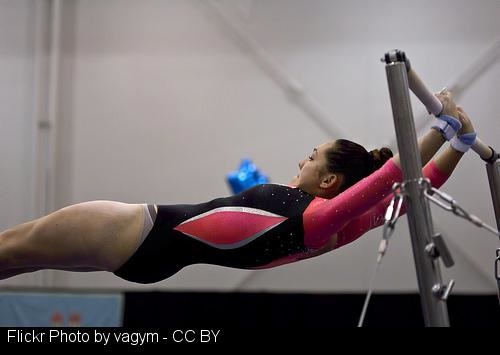By CYN LoPINTO
Editor-in-chief, gerontologist
 Ever since the first modern Olympics took place in Athens, Greece in 1896, people from all over the world are fascinated with the idea of “friendly” competition between opposing countries. The Olympic Games give us all a chance to set aside political and religious differences and enjoy the display of true human spirit. With the never-ending 2016 US election coverage dominating our media, the Rio Summer Olympics will be a welcomed distraction this year.
Ever since the first modern Olympics took place in Athens, Greece in 1896, people from all over the world are fascinated with the idea of “friendly” competition between opposing countries. The Olympic Games give us all a chance to set aside political and religious differences and enjoy the display of true human spirit. With the never-ending 2016 US election coverage dominating our media, the Rio Summer Olympics will be a welcomed distraction this year.
Watching the Olympics provides the opportunity to learn about people who are unlike us in a lot of ways, but at the same time, not all that different. It teaches us tolerance and educates us in a way a history class never could. It also brings us together as a country. Watching the Olympics is an escape from all the negativity we experience in the 24/7 information age we live in. It is pure and simple.
We all have special memories from past Olympic games. Certain poignant moments played on TV really stand out. These events sparked great discussions and enable us to share our joys and disappointments with the people around us. I mostly remember Olympic games from my childhood and young adult years. Everyone watched the Olympic games back then. I chose six of my favorite Summer Olympic stories and moments from 1960 – 1996. See if you remember any of these.
USA runner Wilma Rudolph was honored as the “fastest woman in the world” in newspapers across the globe. She started out in life wearing a brace on her left leg up until the age of 11. By age 20 she had gold medals in the 100- and 200-meter events as well as in the relay race. When she first got to Rome, a major mishap occurred. The day before her qualifying race, Wilma tripped over a water pipe and sprained her ankle. She was able to compete but had to keep her ankle taped up all throughout the games. Winning three gold medals under such difficult circumstances earns Wilma Rudolph the title of a true champion.
Who could forget the charismatic gymnast Olga Korbut from the Soviet Union? This 17-year-old warmed our hearts with her larger than life smile. And when she messed up on the uneven bars and cried to the television cameras, the whole world felt bad. By the media playing her disappointment over and over again, Olga became the focus of the 1972 games. She came back and won two gold and one silver medal in the individual events. Because of all this attention, the gymnastics portion of the summer games went on to become one of the most highly viewed events.
Another foreign gymnast made us take notice in the summer of 1976, Nadia Comaneci, a 13-year-old gymnast froms Romania, kept audiences glued to their television sets. When she performed a flawless routine on the uneven parallel bars, the world looked on in amazement. She scored a perfect 10, but because the scoreboard was never programmed for a 10, viewers saw the number 1 flash on the screen. The crowd gasped in disbelief until they realized it was just a mistake. Nadia went on to earn multiple perfect scores and walked away with three gold, one silver and one bronze medal. She became the first gymnast from Romania to receive an Olympic gold medal.
In 1984, 16-year-old gymnast Mary Lou Retton became the first American to win the individual all-around women’s gymnastics title. This consisted of four events (uneven bars, balance beam, floor exercises and the vault). Going into the final vault portion of the competition, Mary Lou was trailing behind Romania’s Ecaterina Szabo by only 5 hundredths of a point. Retton had already received two scores of 10 in the previous events but needed another 10 in the vault to win the gold medal. When she did her routine, the stadium was completely quiet. Mary Lou’s performance was perfect. There was a slight delay in the showing of her score, but when a 10 appeared on the scoreboard, the crowd went wild. The fact that she won the title in her own country made it even more spectacular.
Perhaps one of the greatest testimonies of human strength and endurance, was displayed by Great Britain’s runner, Derek Redmond during the 1992 Summer Olympics. He had won preliminary races against Steve Lewis of the United States and was expected to medal in the 400-meter race. All the runners took off uneventfully at the start of the race. But just before the halfway point, Redmond heard a pop. It was the hamstring in his right leg. He was in tremendous pain while the other racers passed him. His father ran out on the track in support to ensure that his son would not have to continue. Derek was determined to finish the race, so his father told him that they would do so together. The crowd looked on as father and son crossed the finish line arm in arm. It was a moment that moved audiences around the world.
Although the Olympic Village bombing cast a doom over the 1996 Summer Games in Atlanta, there were still plenty of positive sports moments. The most inspiring story began when United States Women’s Gymnastics team member Dominique Moceanu fell on both of her tries during the final vault event. Fellow member Kerri Strug needed a score of 9.2 or greater to clinch the gold medal. On her first attempt, Kerri fell and tore a ligament in her left ankle. She only scored a 9.162. She knew she had to perform her second attempt in pain in order for her team to have a chance at the team gold. She performed beautifully and was able to put weight on both of her ankles long enough to secure the gold medal for her team. Her coach Bela Karolyi carried her to the awards ceremony while fellow teammates Moceanu and Shannon Miller helped her up on the platform. There wasn’t a dry eye in the arena. While the other members of the team all worked together to help win this medal, Strug will be remembered for her remarkable courage.
Cynthia Lopinto
Latest posts by Cynthia Lopinto (see all)
- Honey Chocolate–Covered Pretzels - April 3, 2018
- True Colors - April 3, 2018
- Spring Cleaning…You’ve Gotta Be Kidding - April 2, 2018
- Should You Stay In Your Home Or Move During Retirement? - April 2, 2018
- Hawaiian Plants For Good Health - April 2, 2018
 Home Front Magazine A Publication for Seniors
Home Front Magazine A Publication for Seniors







